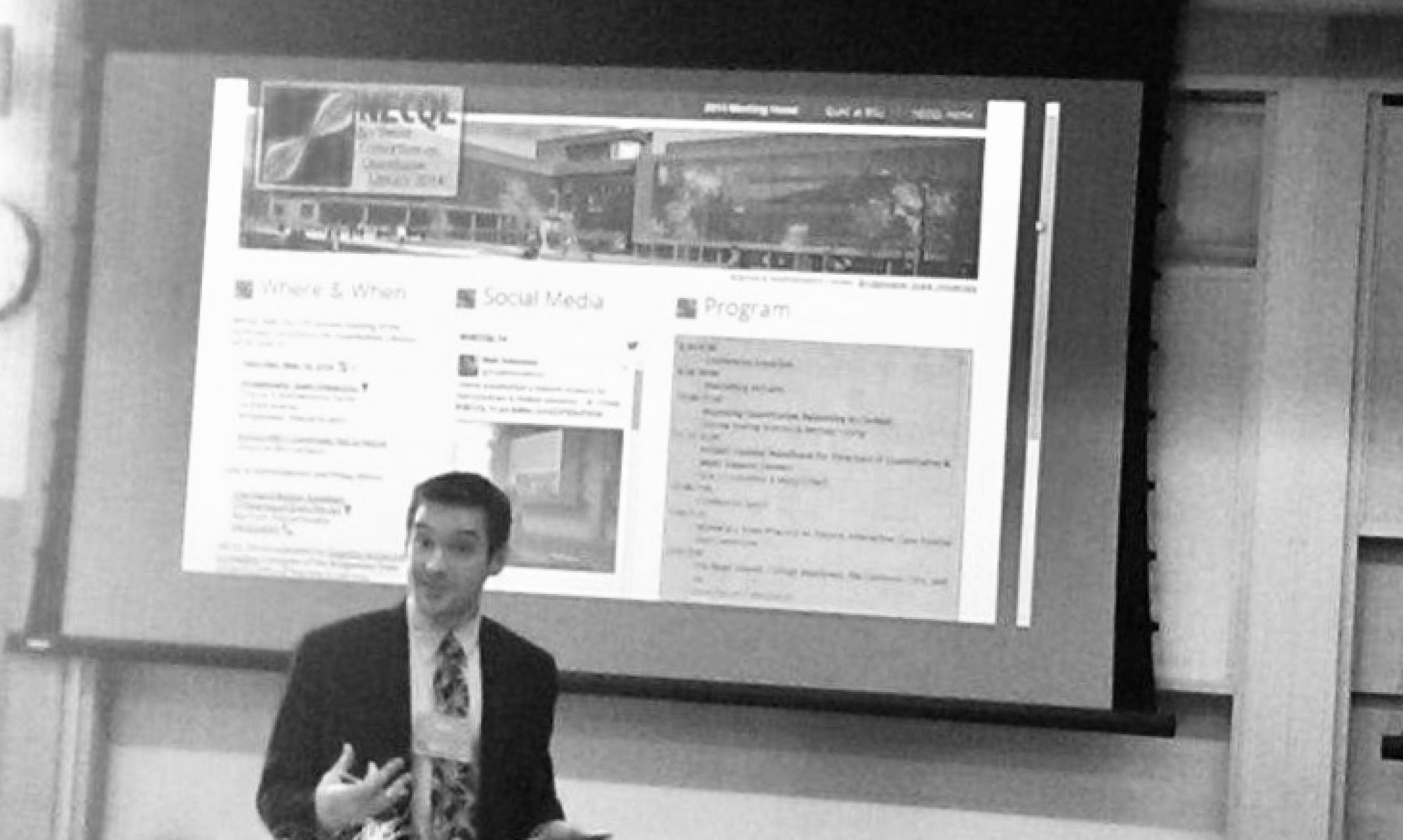An article came across my Twitter feed that hit upon a challenge I didn’t realize I had in thinking about how to run an effective online class:
Using video and audio to increase human presence in online learning https://t.co/uSB4mKwCG4 #HumanMOOC
— Maha Al-Freih (@Maha9313) November 26, 2016
In the article, not only does Steve Kolowich make a point that I fretted about in the beginning of this blog:
[W]hat often makes students choose the flexibility of online learning — being too busy to enroll in a classroom course — can also make it harder for them to keep up with their studies.
What’s more, he also talks about how the primary point of contrast between students and instructors — the learning management system (LMS) — is often designed around asynchronous, text-based interactions (posting course materials, dropboxes for written work, text-centered discussion boards) in ways that make it difficult to integrate richer media interaction. In short, for instance, Blackboard isn’t set up to be a transformative platform for multimedia engagement — it’s a bulletin board-cum-gradebook for trading in text.
Which is fine as far as it goes. But what I miss most when I teach web-hybrid courses is the social interaction that happens in the classroom (and hopefully also out of class, in the hallways or in office hours). And I have tried to use video to amplify my pedagogy in the past but struggled to connect it naturally with the rest of my course. So I says:
https://twitter.com/matthematician/status/802572942974578688
And I didn’t realize it at the time, but my frustration with getting students to engage in text-based interaction spilled over into frustration with getting them to interact with a text more generally. That is, it’s not just that I’m unsure how to invite students to meet with me via text, but also that I’m unsure how to invite students to a text at all. Partly because I teach in a discipline that, particularly at the undergraduate level, values parsimony in its written expression (“the best” proof, or “the most popular” textbook, is often the shortest or the one which requires a minimal level of textual engagement), I haven’t been forced to reckon with my students’ reticence to read as much. It may also be why I’ve found some success in video-based flipped pedagogy: for my students, I got the sense that videos weren’t supplementing their reading, they were supplanting it. Was that what I really wanted for them?
That said, as I puzzled through this in the public arena of Twitter (yay for Open Pedagogy), I was fortunate to have one of my colleagues push back from a different disciplinary perspective:
https://twitter.com/paulakrebs/status/802907636299599872
https://twitter.com/paulakrebs/status/802910503957889024
Her point, as I took it anyway, was twofold: (1) that the message is more important than the medium, and (2) that engaging with text is essential for all students, whether online or in person, whether studying Victorian literature or algebraic topology. So I’m coming full circle to the question:
How do I use the tools at my disposal in a course, particularly online tools, to invite students to engage with their text?
What I’ve tried, that mostly hasn’t worked, so far:
- Reading quizzes. These were a particularly unpopular element in a particularly difficult class the last time I taught multivariable calculus in 2013. Despite my best effort to make the quizzes short, low-stakes, and formative in nature, students still felt like they were a “gotcha” — they’d do poorly on them either because they didn’t read, or didn’t know how to understand what they read, and then neither they nor I knew how to follow up on that fact.
- Team readiness tests (RATs). I used this Larry Michaelsen technique in a business calculus class. Each test was taken first as individuals, then immediately thereafter as a team. The individual test was on paper, while the team test was given via an LMS (Moodle at the time) that permitted teams to revise each answer until they got it correct. This went over much better than my previous reading quizzes, maybe because of the self-correcting revision mechanism that made it feel less adversarial. But it was a lot of work to sustain because of the need to create both paper and LMS versions of each quiz. (Plus, at least one student, it turns out, blew off the individual portions because he incorrectly thought that only the team score counted.)
- Social reading. The newest attempt, I’m using this method along with the exciting Hypothesis web annotation platform to create a conversation among my students right in the margins of online text. It’s been limited so far since I’m not using an open, online textbook, but at least I can (1) tell that my students are, in fact, reading, and (2) see exactly how they’re building understanding around the text, where they’re getting stuck when they read, and how they’re helping each other to get unstuck. I’ll be using a free online text next semester so I’m looking forward to using this more consistently throughout the course.
So what are some other ways to use technology to transform how we invite students into a text?

